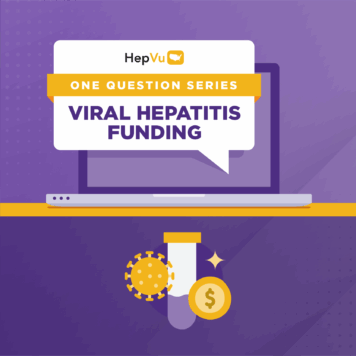Selected and summarized by Ronald O. Valdiserri, MD, MPH, Professor, Department of Epidemiology, Rollins School of Public Health, Emory University, and Co-Chair of HepVu.
Dr. Valdiserri reviews significant articles on prevention, public health, and policy advances in viral hepatitis. This month, he highlights “Hepatitis C Screening in Emergency Departments: The DETECT Hep C Randomized Clinical Trial.” Haukoos J, Rothman RE, Galbraith JW, Hopkins E, Hsieh YH, et al. Journal of the American Medical Association 2025; doi: 10.1001/jama.2025.10563
What question(s) does this study address?
Recent estimates suggest that as many as 4 million persons in the United States are living with Hepatitis C virus (HCV) infection. One analysis indicates that some 800,000 persons who are infected are unaware that they have HCV. In the absence of diagnosis, persons with HCV cannot take advantage of curative treatment and many will sustain progressive liver damage leading to cirrhosis, liver cancer and death. Diagnosing HCV in a timely manner can enable prompt treatment of HCV with direct acting oral agents (DAAs), thereby preventing disease progression and reducing future mortality.
Emergency departments (ED) in hospitals offer an opportunity to increase screening for HCV as they serve as a medical safety net for many persons who are not enrolled in regular care. Consider that a study of ED patients at an urban teaching hospital in Oakland California documented that 11% of ED patients had ever injected drugs and that these patients reported a much higher rate of HCV infection (53%) compared to ED patients who had never injected drugs (3.4%).
Haukoos and his colleagues conducted a multicenter randomized clinical trial of patients seen in 3 high volume urban EDs to identify the most effective way to screen patients for HCV in a real-world setting: non-targeted (i.e., non-risk based, all eligible patients offered HCV testing) versus targeted (i.e., only patients with an identified risk factor were offered HCV testing) screening.
What are the major findings of this report/article?
- Eligible patients (i.e., who were clinically stable, 18 years of age or older, able to provide consent, and with no previous HCV diagnosis) were enrolled from EDs in Denver, CO; Baltimore, MD; and Jackson, MS from November 2019 through early August 2022.
- A total of 147,498 patients were enrolled: 73,847 were randomized to nontargeted HCV screening and 73,651 were randomized to targeted HCV screening.
- Overall, the median age was 41 years, 51.5% of patients were male, 42.3% were Black, 20.9% were Hispanic, 32.2% were white and 37.5% were on Medicaid.
- No cost, opt-out HCV testing with verbal consent was offered to patients in both groups; all HCV positive antibody tests were reflexed to an HCV RNA assay to determine viremia (i.e., active infection).
- More patients in the targeted group were offered HCV testing (65,693), accepted testing (16,563), and completed testing (9,867) compared to those in the targeted screening group where 20,982 were offered testing, 7,116 accepted testing, and 4,640 competed testing. Differences in accepted testing versus competed testing in both groups were the result of “real world” circumstances such as patient changes his/her mind, phlebotomist is unable to draw blood, patient leaves before the specimen is collected, etc.
- 154 confirmed new HCV diagnoses were found in the nontargeted screening group compared to 115 confirmed new HCV diagnoses in the targeted testing group.
What are the implications for the prevention and control of viral hepatitis?
- In this study of adults seen in 3 urban emergency departments, a nontargeted HCV screening approach was superior to a targeted HCV screening approach in identifying new HCV infections.
- At the time the study was planned, recommendations for HCV screening were based on the identification of a risk factor (targeted screening) but shortly after the trial began enrollment, recommendations were updated, calling for universal one-time HCV testing for all adults.
- Although more patients in the nontargeted screening group accepted HCV testing compared to those in the targeted screening group, the acceptance rates were still low. Future studies evaluating system and patient level interventions will be necessary to improve HCV test acceptance in busy clinical settings like urban emergency departments.
- Follow-up over 18 months post HCV diagnosis revealed overall low rates of linkage to care (20%), HCV treatment initiation (16%) and completion of HCV treatment (12%). This finding points out that in addition to improving HCV diagnosis in clinical settings, processes such as peer navigation and low-barrier follow-up telehealth appointments must be put into place to improve the other critical steps along the HCV care cascade in support of Hepatitis C elimination.



